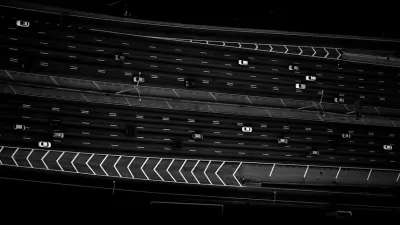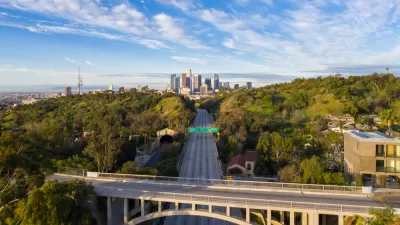Logically we might assume that as cities grow larger, commutes get harder. It can certainly feel that way. But research points to structural factors that actually make commuting in big cities more efficient.

Traffic can be annoying, but it also suggests that a city is thriving. Eric Jaffe writes, "What is a little surprising is that even as cities get larger, life in them doesn't necessarily grind to a halt. Sure, it can sometimes feel like that's the case when you're stuck in rush-hour gridlock. But while traffic congestion may be a personal annoyance, it's also a broad indication of a healthy economy."
Despite their high populations, commuting in big cities is more efficient than one might think. "The reason bigger workforces don't translate into total stagnation is that metros have 'nimble and self-adjusting commuting patterns' that preserve their economic advantage, report [Shlomo Angel and Alejandro Blei] in a paper in the journal Cities. Those patterns have three key components: density, job and home relocation, and overall mobility."
Jaffe goes on to discuss each of these factors in detail. The implications for planning are mixed: "On one hand, the benefits of density and mobility suggest a need for compact development near transit lines; on the other hand, the benefits of freeway speed would seem to endorse a transportation status quo that centers on car travel."
FULL STORY: Why Commutes Aren't Twice as Long in Cities With Twice the Population

Alabama: Trump Terminates Settlements for Black Communities Harmed By Raw Sewage
Trump deemed the landmark civil rights agreement “illegal DEI and environmental justice policy.”

Planetizen Federal Action Tracker
A weekly monitor of how Trump’s orders and actions are impacting planners and planning in America.

Why Should We Subsidize Public Transportation?
Many public transit agencies face financial stress due to rising costs, declining fare revenue, and declining subsidies. Transit advocates must provide a strong business case for increasing public transit funding.

Understanding Road Diets
An explainer from Momentum highlights the advantages of reducing vehicle lanes in favor of more bike, transit, and pedestrian infrastructure.

New California Law Regulates Warehouse Pollution
A new law tightens building and emissions regulations for large distribution warehouses to mitigate air pollution and traffic in surrounding communities.

Phoenix Announces Opening Date for Light Rail Extension
The South Central extension will connect South Phoenix to downtown and other major hubs starting on June 7.
Urban Design for Planners 1: Software Tools
This six-course series explores essential urban design concepts using open source software and equips planners with the tools they need to participate fully in the urban design process.
Planning for Universal Design
Learn the tools for implementing Universal Design in planning regulations.
Caltrans
Smith Gee Studio
Institute for Housing and Urban Development Studies (IHS)
City of Grandview
Harvard GSD Executive Education
Toledo-Lucas County Plan Commissions
Salt Lake City
NYU Wagner Graduate School of Public Service




























